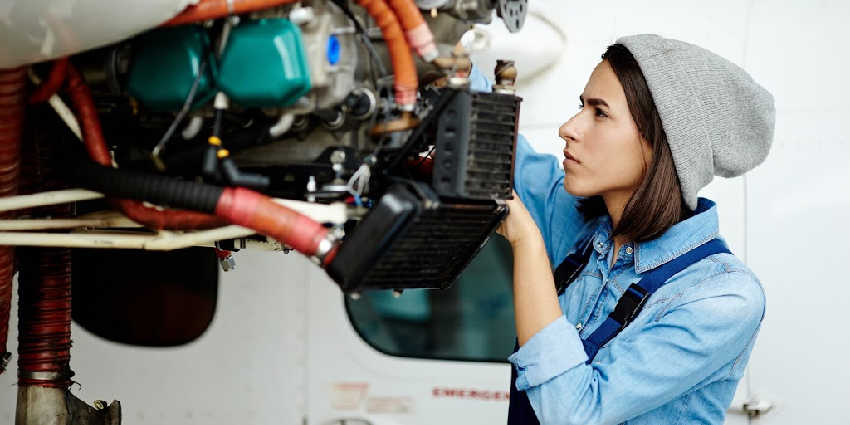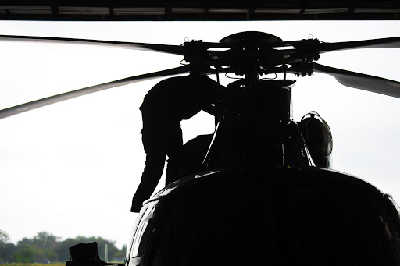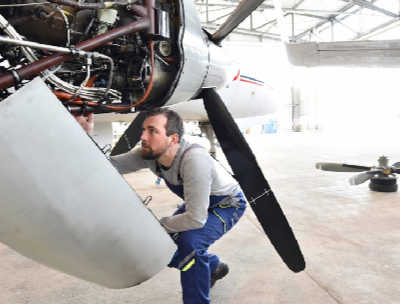
Aircraft Mechanic Schools in Phoenix, AZ
How to get your A&P Aircraft Mechanic certification in Phoenix, AZ; training requirements, eligibility, and more. To earn your A&P Aircraft Mechanic Training Certificate in Phoenix, AZ (A&P License in Phoenix, AZ), you must attend a Federal Aviation Administration (FAA) certified Aircraft Mechanic School in Phoenix, AZ OR have at least 30 months of relevant civilian or military work experience (supervised by a certified aviation mechanic from Phoenix, AZ).
The FAA issues the A&P certificates (airframe and powerplant certificates), and A&P mechanics from Phoenix, AZ can get either an airframe rating or a power plant rating or both--most aviation mechanics from Phoenix, AZ get both. Those who want a certificate with just a single rating and who base their application on practical experience must demonstrate 18 months of work experience applicable to the chosen rating. Learn more about the training and experience requirements to become an A&P mechanic near Phoenix, AZ.
After your aircraft mechanic school qualifications are met, you'll be eligible to take the required oral, practical, and written tests. You must pass all these tests within 24 months. The tests cover 43 technical subjects. Typically, tests for one certificate--airframe or power plant--take about 8 hours. (Get more details about the Aircraft A&P Mechanics Tests)
When you pass, you will have earned your FAA A&P mechanic license with airframe and/or powerplant certificates (A&P license in Phoenix, AZ), and you'll be on your way to a successful career in aviation maintenance! Learn more about aviation maintenance A&P technician schools near Phoenix, AZ.
A&P Mechanic Schools in Phoenix, AZ
Although your certificates earned from A&P mechanic schools in Phoenix, AZ don't expire, aviation mechanics from Phoenix, AZ must remain "current" by meeting several criteria, including completing a minimum of 1,000 hours of hands-on work experience during the previous 24 months (or completing a refresher course) and completing at least 16 hours of additional training every 24 months.
The additional training requirement is usually satisfied by attending manufacturer events or training with outside contractors hired to conduct the training.
Avionics Technician Specialty Training
As an A&P mechanic in Phoenix, AZ, if you have the training, qualifications, and tools, the FAA will allow you to work on avionics as well. Avionics technicians are not specifically required to have FAA certification if they received their avionics training in the military or from working for an avionics manufacturer.
Get Matched
With the BEST
School/Training for YOU! INQUIRE HERE
Aircraft Mechanic Trade Schools in Phoenix, AZ
Aviation maintenance technicians keep aircraft in the air by inspecting, replacing, and fixing nearly every part of an airplane or helicopter. The term aviation maintenance technician (or A&P Mechanic) is very broad and applies to nearly anyone who works on aircraft in Phoenix, AZ.
However, as an aspiring Aviation Mechanic in training, you'll quickly learn that there are several different types of aviation mechanics out there in Phoenix, AZ.
First of all, airframe mechanics in Phoenix, AZ are licensed to perform repair work on the entire aircraft with the exception of the engine(s), propellers, and instruments. Powerplant mechanics in Phoenix, AZ are authorized to work on engines and in some cases, propellers.
Although Aviation A&P Mechanics from Phoenix, AZ can earn either an airframe or powerplant certificate, the vast majority of Aviation Mechanic near Phoenix, AZ earn both certificates and are hereafter referred to as A&P (airframe and powerplant) mechanics. Avionics technicians work exclusively on aircraft radios, instruments, navigation, weather, traffic, and ground proximity systems. Learn more about aviation maintenance technician jobs.
Aviation Maintenance Technician Career Paths Near Phoenix, AZ
As an A&P mechanic in Phoenix, AZ, you are eligible to work in a huge variety of settings. You can work as a freelance mechanic at your local airfield in Phoenix, AZ, get a job working for a local airport near Phoenix, AZ, work for a corporate aviation department maintaining one or a fleet of aircraft in Phoenix, AZ, or end up at a major airline working on passenger jets and turboprops.
After three years of operating as an A&P mechanic in Phoenix, AZ (with 24 months of hands-on experience), you're eligible to move up and become an inspection authorization mechanic (IA). IA's are A&Ps with the authority to return aircraft to service after certain types of thorough inspections.
Aviation Maintenance Technician Key Points
Aircraft Mechanic Trade Schools in Phoenix, AZ must be detail-oriented. Aircraft mechanics perform a variety of complex tasks where mistakes can be costly in terms of money and human life. When the tools are put away, the job is not complete; aircraft mechanics must also be excellent record keepers.
Paperwork for all inspections and work completed must be filed and logged appropriately for each task completed. The larger and more complex the aircraft, the more paperwork. Find out more about aviation maintenance technician training.
Helicopter History Fact
In 1783, Christian de Launoy, and his mechanic, Bienvenu, made a model with a pair of counter-rotating rotors, using turkey flight feathers as rotor blades, and in 1784, demonstrated it to the French Academy of Sciences.
Helicopters are classified as rotary wing aircraft, and their rotary wing is commonly referred to as the main rotor or simply the rotor.
Helicopter Fun Facts for Phoenix, AZ
Once the engine fails or otherwise is shut off, the pilot must immediately lower the pitch, reducing lift and drag, and the helicopter will begin to descend. If they dont do this quick enough, allowing the RPM of the main rotor to drop too far, theyll then lose control of the helicopter and will likely not get it back.
Fixed-Wing Aircraft Factoid - Flight Control Surfaces
Flight Control Surfaces The directional control of a fixed-wing aircraft takes place around the lateral, longitudinal, and vertical axes by means of flight control surfaces designed to create movement about these axes. These control devices are hinged or movable surfaces through which the attitude of an aircraft is controlled during takeoff, flight, and landing. They are usually divided into two major groups: 1) primary or main flight control surfaces and 2) secondary or auxiliary control surfaces.